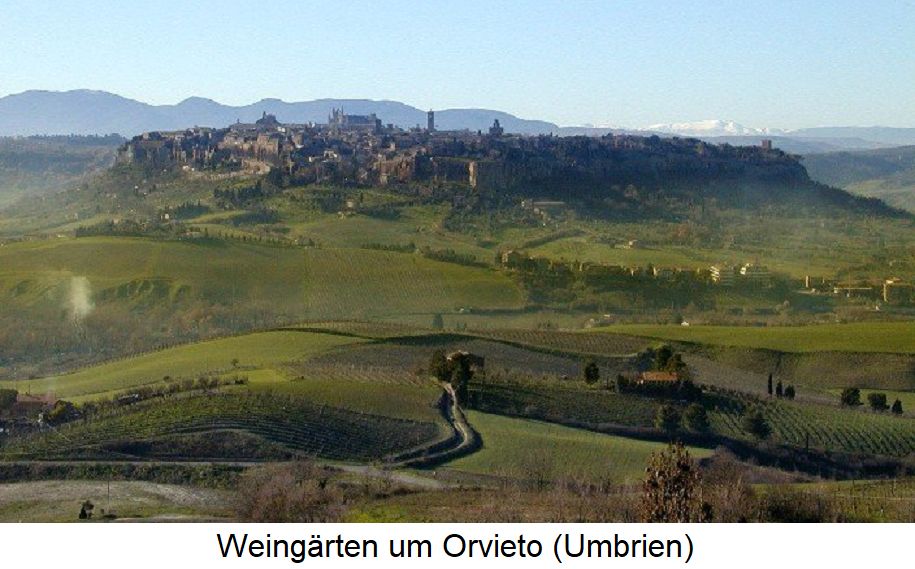DOC area for white wine in the border area of the Italian regions Umbria and Lazio. The zone covers about 2,500 hectares of vineyards in the municipalities of Allerona, Alviano, Baschi, Castel Giorgio, Castel Viscardo, Fabro, Ficulle, Guardea, Montecchio, Montegabbione, Monteleone d'Orvieto, Orvieto and Porano in the province of Terni (Umbria), and Bagnoregio, Castiglione in Teverina, Civitella d'Agliano, Graffignano and Lubriano in the province of Viterbo (Lazio). Humidity in autumn causes fog and thus noble rot. The Etruscans were already cultivating wine here and Orvieto wines had a legendary reputation in the Middle Ages. The painters Pinturicchio (1454-1513) and Luca Signorelli (1441-1523) demanded rations of wine as part of their fee for their work in the Sistine Chapel and the Cathedral of Orvieto. Pope Gregory XIV (1535-1591) also greatly admired him and decreed in his will that his body should be washed with it before burial.

Until the Second World War, the wine was generally produced sweet and bottled in the typical straw-braided Pulcinella bottle. The historical sites of the large area are mostly near the town of Orvieto, which is situated on a volcanic table mountain overlooking the river Paglia. The Orvieto Classico area, with about 1,500 hectares (for which DOCG status has been applied for and is expected), is located in the middle on either side of the Paglia and on the shores of Lake Corbara. Typical of the white wine is its harmonious, slightly bitter and piquant aroma. It is produced from Procanico = Trebbiano Toscano and Grechetto = Grechetto di Orvieto (zum. 60%), as well as other approved varieties such as Drupeggio, Malvasia Toscana = Malvasia Bianca Lunga and Verdello (max. 40%). It is produced in the flavours secco, abboccato, amabile and dolce. Additionally there are the following wine types Superiore (higher alcohol content), Vendemmia tardiva(late vintage) and Superiore Muffa Nobile(noble rot) Wines from the core area may bear the addition Classico. Well-known producers are Antinori, Barberani, Bigi, La Carraia, Decugnano dei Barbi, Palazzone, Tenuta le Velette and Vitivinicola Colli Orvietani.
There is also a much smaller DOC area for red wines called Rosso Orvietano (Orvietano Rosso).
Picture: From Adriano - Own work, CC BY-SA 3.0, Link
Voices of our members

Serious sources on the internet are rare - and Wine lexicon from wein.plus is one such source. When researching for my articles, I regularly consult the wein.plus encyclopaedia. There I get reliable and detailed information.
Thomas Götz
Weinberater, Weinblogger und Journalist; Schwendi